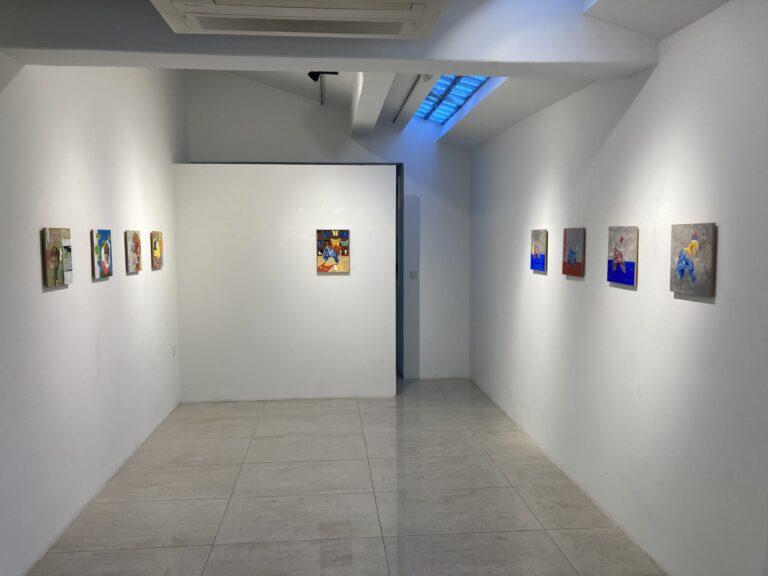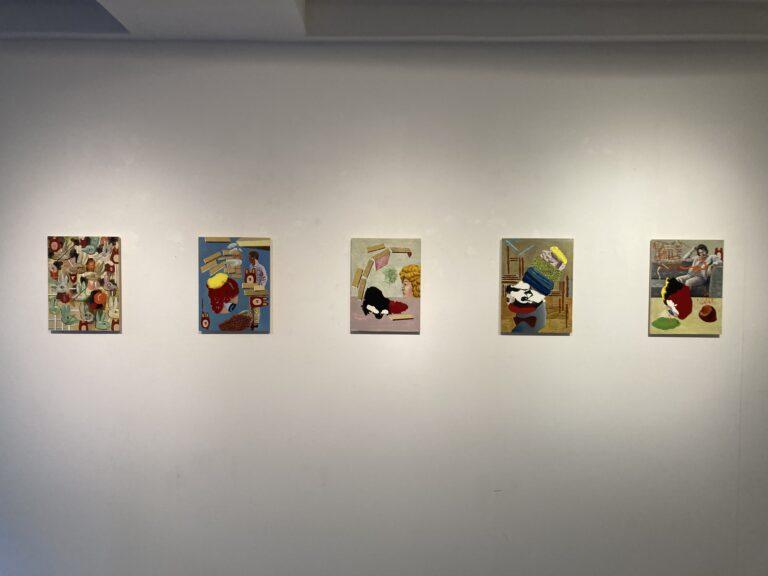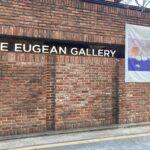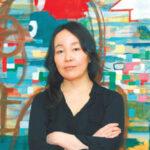An Omniscient Artist’s Perspective in the World of Form-Artist Note
December 16, 2021-January 22, 2022
Chung Suejin
This is Not a Pipe (The Treachery of Images) by Rene Magritte is not an actual pipe. But, if not a pipe, what is it? We can answer that question when we separate the form world from the real world. We are all aware that paintings are not exact replicas of the real world. Yet, as we try to make sense of paintings, we cannot stop projecting our individual experiences of the real world onto them. This is true not only for images in paintings that evoke real-world associations but also for abstract paintings. Abstract images are still understood as the polar opposite of figurative images that resemble the real world; however, abstract images should be included in the real-world experience. They are inseparable pairs like “day and night,” “plus and minus,” or “thesis and anti-thesis. “

Ideas exist as images in the world of form. It is not a world of objects but rather a world of various perspectives on objects. So there are images that appear to be related to the real world, but others appear unrelated to it. The mere fact that two things are similar does not imply that they are the same. As a result, various approaches to comprehending forms are unavoidable. There is a need for a “way of seeing” in this situation: a method of comprehending the unique world of form. “Budo theory” is the visual theory I developed for this purpose, and “Budozi” is the world of form.

I’m not going to bore you with lengthy explanations for each of the paintings in this exhibition. I believe that viewers do not need to understand the complex visual theory. However, I believe that some basic information should be provided for viewers, so I will briefly explain the types of information contained in the paintings.
The substantial object represented in the paintings is the structure of consciousness. The relationship between the subject of cognition and the object of cognition generates the structure of consciousness. These paintings depict various analyses of consciousness structures. Even though I apply the theory to the paintings, viewers would not notice the differences right away. It’s the same idea when people who haven’t studied Korean try to read a Korean novel: they won’t understand what’s going on. People tend to avoid things that are unfamiliar to them. It’s not uncommon for something to be difficult to grasp simply due to unfamiliarity. Thus far, painting- the language of form- is unfamiliar to most people. It isn’t easy even for me to look at paintings differently. I needed practice; I still do. Any conceptualized place formed by the projection of recognized ideas is referred to as a “plain.” In this sense, the dimensions of a plain are determined by the dimension of cognition projected onto the plain rather than the typical two dimensions. Unlike in science fiction, the world of this new dimension can only be experienced through cognitive changes, which is the only way to do so. The countless perspectives in the world of form cause us to perceive the object differently, and new dimensions can be created by combining these different ways of seeing. Paintings provide cues that allow us to experience different dimensions. Sensory organs connect the mind and body. The sensory cognitive system is how we perceive things. The various textures and brushstrokes revealed in the paintings’ images serve as sensory representations of consciousness’s invisible activities.

My paintings are not expressions of thoughts, emotions, or feelings but the structures behind those thoughts, emotions, and feelings. They have multi-dimensional structures.


